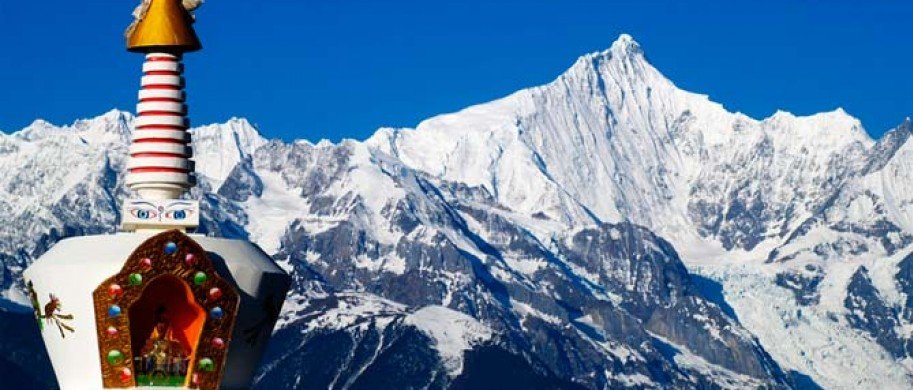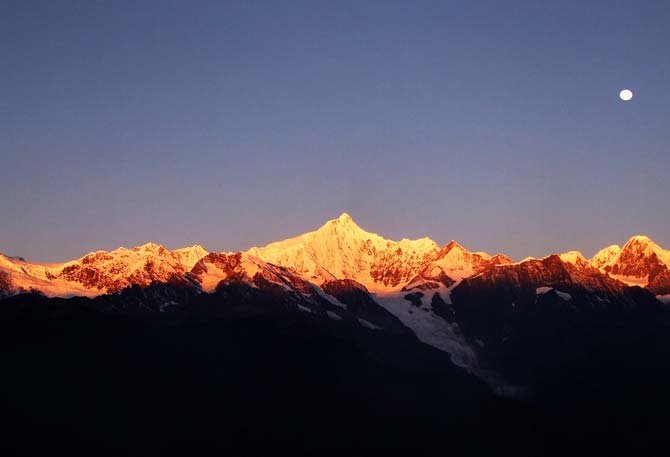
Kawagebo, as it is known by local residents and pilgrims, is the highest mountain in Yunnan (6740m). It is located in Deqin County on the border with Tibet, and near the border with Myanmar. It rises about 180 km north of Zhongdian / Shangri La.
Geography
Kawakarpo - as Kawagebo is also called - is the highest point of the Meili Xue Shan (Meili Snow Mountain), a small subrange of the Hengduan Shan, the major north-south trending complex of mountains covering the region where Tibet, Yunnan, Sichuan, and Myanmar converge. The Meili Snow Mountain forms part of the divide between the upper Salween (Nujiang) and Mekong (Lancang Jiang) rivers.
The Meili Snow Mountain range has over 20 peaks with permanent snow cover, including six peaks over 6,000 m. The highest portion of the range is in the north, although Kawagebo is centrally located. The range rises high over the deeply incised valleys to the east and west, leading to dramatic relief. The range is highly affected by the monsoon, leading to especially unstable snow conditions, which have affected climbing attempts (see below).
Kawagebo is one of the most sacred mountains for Tibetan Buddhism as the spiritual home of a warrior god which pre-existed Buddhism's arrival in Tibet. It is visited by 20,000 pilgrims each year; many pilgrims circumambulate the peak, an arduous 240 km trek.
Tibetans believe the warrior god will leave them if human sets foot on the peak of Kawakarpo, making the ground unholy. Disasters will follow as they lose god's protection.

Climbing history
The first attempt on Kawagebo was made in 1987 by a party from the Joetsu Alpine Club of Japan.
In the winter of 1990-91 a group from the Academic Alpine Club of Kyoto University attempted the peak in conjunction with a Chinese group. Their activity caused heavy protests from the local Tibetan community due to the mountain's cultural and religious significance. On 3 January 1991, a nighttime avalanche killed all seventeen members of the expedition, in one of the most deadly mountaineering accidents in history. The Kyoto club returned in 1996 to make another unsuccessful attempt.
American expeditions, led by Nicholas Clinch, visited the range in 1988, 1989, 1992, and 1993, attempting other major peaks, but were unsuccessful.
In 2001, local government passed laws banning all future climbing attempts on cultural and religious grounds. As of 2010, none of the significant peaks of the range have been successfully climbed. (wikipedia)
- 465 reads
